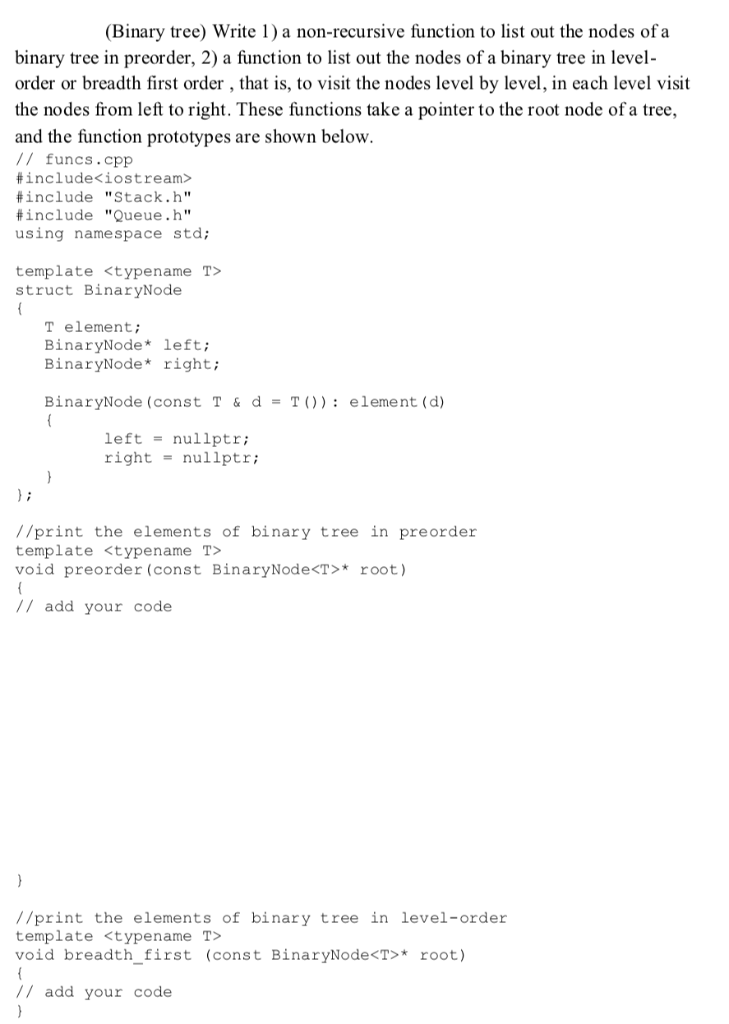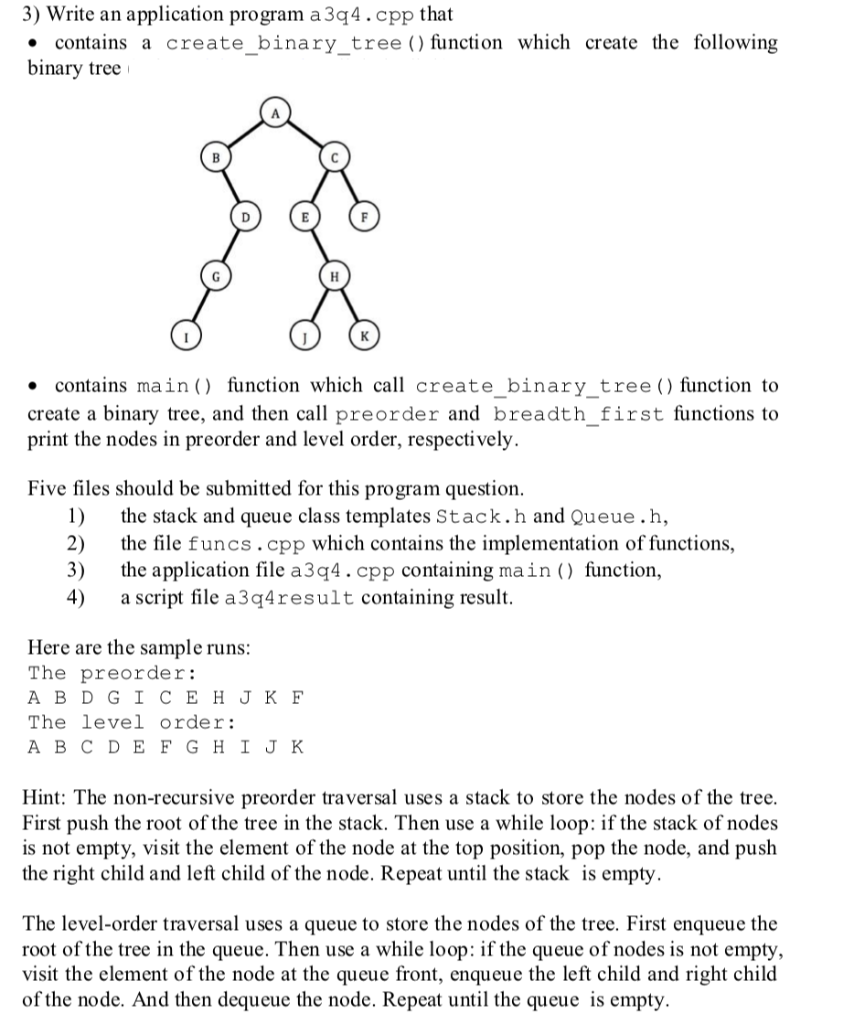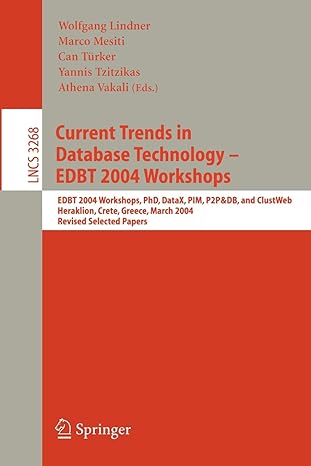Answered step by step
Verified Expert Solution
Question
1 Approved Answer
// funcs.cpp #include #include Stack.h #include Queue.h using namespace std; template struct BinaryNode { T element; BinaryNode* left; BinaryNode* right; BinaryNode(const T & d =


// funcs.cpp
#include
#include "Stack.h"
#include "Queue.h"
using namespace std;
template
T element; BinaryNode* left; BinaryNode* right;
BinaryNode(const T & d = T()): element(d) {
left = nullptr; right = nullptr;
} };
//print the elements of binary tree in preorder template
// add your code
}
//print the elements of binary tree in level-order template
// add your code }(Binary tree) Write 1) a non-recursive function to list out the nodes ofa binary tree in preorder, 2) a function to list out the nodes of a binary tree in level- order or breadth first order , that is, to visit the nodes level by level, in each level visit the nodes from left to right. These functions take a pointer to the root node of a tree, and the function prototypes are shown below. // funcs.cpp # include
Step by Step Solution
There are 3 Steps involved in it
Step: 1

Get Instant Access to Expert-Tailored Solutions
See step-by-step solutions with expert insights and AI powered tools for academic success
Step: 2

Step: 3

Ace Your Homework with AI
Get the answers you need in no time with our AI-driven, step-by-step assistance
Get Started


